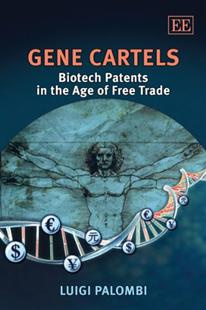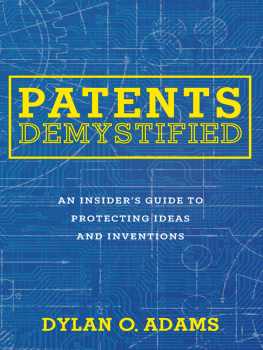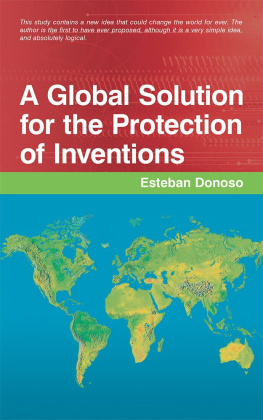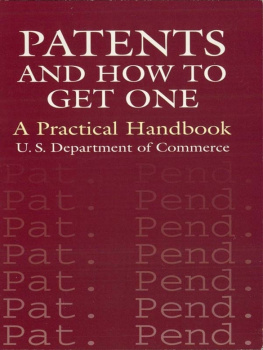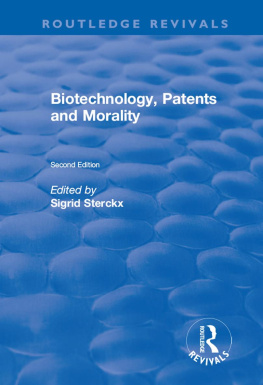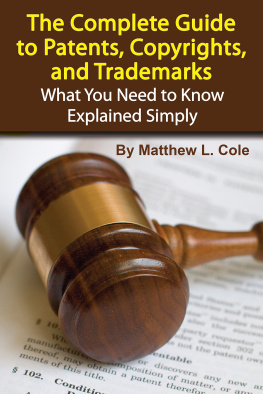NOTES
1. Sommerich, OC (1945), A Brief against Confiscation, Law and Contemporary Problems, 11, 152-65, 165. For a general discussion concerning the confiscation of intellectual property assets see Sommerich, OC (1955), Treatment by United States of World War I and II Enemy-owned Patents and Copyrights, The American Journal of Comparative Law, 4 (4), 587-600 and Berman, HA (1945), Cartels and Enemy Property, Law and Contemporary Problems, 11 (1), 109-17.
2. Borchard, E (1943), Nationalization of Enemy Patents, The American Journal of International Law, 37, 92-7.
3. 1892-1961; Assistant Secretary of State, 1933-45.
4. 1881-1959; UK Ambassador to Washington, 1942-46.
5. 1883-1946; 1st Baron Keynes, 1942.
6. Opie, R (1957), Anglo-American Economic Relations in War-Time, Oxford Economic Papers, New Series, 9 (2), 138.
7. Ibid, 138.
8. Hull, C (1948), The Memoirs of Cordell Hull (New York: Macmillan Co). For a general discussion of events prior to WWII see Schatz, AW (1970), The Anglo-American Trade Agreement and Cordell Hulls Search for Peace 1936-1938, The Journal of American History, 57 (1), 85-103.
9. 1874-1965; Prime Minister of the UK, 1940-5, 1951-5.
10. My italics.
11. 1882-1948; US Assistant Secretary of Treasury, 1941-6. On 23 November 1953 his photograph appeared on the cover of Time Magazine. Below it the caption read: How much did President Truman know? In a top secret memorandum dated 16 October 1950 to the Director of the FBI, White was posthumously identified as a Soviet spy with the code name Jurist. It had been alleged that Dexter had passed top secret US Treasury information to the Soviet Union and once these allegations had surfaced he resigned the IMF position that had been preordained for him by President Truman. He died after a series of heart attacks on 16 August 1948 having only three days earlier testified to the Congressional House Committee on Un-American Activities that he was not a Soviet spy. Recently James Broughton has argued that White was an internationalist and that the evidence produced by the FBI to inculpate him was ambiguous, particularly since his contact with Soviet officials was consistent with his US Treasury duties. In Broughtons view the fact that White had a Soviet code name was also inconclusive as it was common practice for US officials mentioned in clandestine Soviet communications to be referred to by their codenames. See Broughton, J (2001), The Case against Harry Dexter White: Still Not Proven, History of Political Economy , 33
(2), 219-39.
12. Bell, R (1982), Testing the Open Door Thesis in Australia, 1941-1946, The Pacific Historical Review, 51 (3), 283-311.
13. Beckhart, BH (1944), The Bretton Woods Proposal for an International Monetary Fund, Political Science Quarterly, 59 (4), 489-528. This article provides a contemporaneous recount of the drafting of the charters for the IMF and World Bank, concluding that America should not participate in the IMF.
14. Henderson, H (1949), A Criticism of the Havana Charter, The American Economic Review, 39 (3), 605-17 and for the rejoinder see Ellsworth, PT (1949), The Havana Charter: Comment, The American Economic Review , 39 (6), 1268-73. Also see Dam, KW (2004), Cordell Hull, The Reciprocal Trade Agreement Act, and the WTO, Draft Paper, 10 October 2004.
15. UK Board of Trade, KR Swan (1947), Patents and Designs Acts, Final Report of the Departmental Committee, 1946-47 [Cmd 7206], 22 (95).
16. HC Debs 1919, Vol 118, Col 1, 860.
17. In 1931 the Sargant Committee noted: [d]uring the War it became apparent that Great Britain was suffering from a lack of medicine and drugs, many of which were the subject of patent rights in this country: UK Board of Trade, CH Sargant, (1931), Report of the Departmental Committee on the Patents and Designs Acts and Practice of the Patent Office, 1930-31 [Cmd 3829], 43 (186).
18. Sommerich, OC (1955), Treatment by United States of World War I and II Enemy-Owned Patents and Copyrights, The American Journal of Comparative Law , 4 (4), 587-600.
19. Fletcher Moulton, H and JH Evans-Jackson (1920), The Patents, Designs, and Trade Marks Acts (London: Butterworth & Co.), 71.
20. UK Board of Trade, KR Swan, (1946), Patents and Designs Acts, Second Interim Report of the Departmental Committee, 1945-46 [Cmd 6789], 10 (35)
21. Swan Committee (1947), above n 15, 21 (para. 93).
22. Ibid, 21 (93).
23. Ibid, 22 (96).
24. Swan, KR (1908), The Law and Commercial Usage of Patents, Designs and Trade Marks (London: Archibald Constable & Co Ltd), 4.
25. Swan Committee (1946), above n 20, 10 (39). In fact this effect was well understood by
Carl Duisberg who was chairman of Bayer Germany (before it became part IG Farben) in 1919 when the company lost control of the Bayer trade marks, including Aspirin. Effectively Bayer Germany had been locked out of its former US and South American markets even though the patent for Aspirin had expired.
26. Ibid, 10 (41).
27. Swan Committee (1947), above n 15, 22 (95): We also consider that a claim for a new
substance should always be deemed to exclude the same substance when found in
nature.
28. Ibid, 46 (227).
29. Swan Committee (1946), above n 20, 32-3.
30. Ibid, 32: the Examiner cannot have cognisance of all matters relevant to a proper
assessment of the advance described and claimed.
31. Swan Committee (1947), above n 15, 15 (56).
32. Ibid, 17 (65).
33. Prime Minister Clement Attlee (1883-1967); Deputy Prime Minister 1942-5; Prime Minister 1945-51; 1st Earl Attlee, 1955. His Labour government was responsible for the nationalization of the coal and steel industries and for utilities such as electricity, gas, telephones, railways, road haulage and canal transport. The Beveridge Report was also implemented by his government, with the establishment of the National Health Service in 1945.
34. My italics.
35. My italics.
36. Sargant Committee (1931), above n 17, 43 (186).
37. Ibid.
38. 1879-1963; knighted KCB, 1919; life peer, 1946.
39. Coscelli, A (2000), The Importance of Doctors and Patients Preferences in the
Prescription Decision, The Journal of Industrial Economics, 48 (3), 349-69.
40. See for instance a 2007 report by Consumers International, a not-for-profit organiza
tion, entitled Drugs, Doctors and Dinners, How Drug Companies Influence Health in the Developing World. Although this report focuses on the decisions made by doctors in developing countries, there is evidence that the tactics employed by pharmaceutical companies were perfected by their use in developed countries (like England) after WWII.
41. Slinn, J (2005), Prescription Pharmaceuticals in the UK, Business History, 47 (3), 352-66.
42. Ibid, 353.
43. 1881-1955; knighted, 1944; Nobel Prize, 1945.
44. 1898-1968; knighted, 1944; Nobel Prize, 1945; Lord Florey, 1965.
45. 1906-79; Nobel Prize, 1945.
46. 1911-2004.
47. 1899-1959.
48. 1891-1978; knighted, 1946; 1st Baronet Jephcott, 1962.
49. 1905-88; knighted, 1967.
50. 1903-82.
51. Slinn, above n 41, 355.
52. Davonport-Hines, R (2007), Jephcott, Sir Harry, Oxford Dictionary of National
Biography, available at http://www.oxforddnb.com.virtual.anu.edu.au/view/
printable/31286.
53. Corley, TAB (1999) The British Pharmaceutical Industry Since 1851, Centre for International History, Working Paper Series, University of Reading, available at http://www.rdg.ac.uk/Econ/Econ/workingpapers/emdp404.pdf, 18; also reproduced in L Richmond, J Stevenson and A Turton (2003), The Pharmaceutical Industry: a Guide to Historical Records (Aldershot: Ashgate Publishing Limited; Burlington: Ashgate Publishing Company).
54. Corley, above n 53, 18-19.
Next page
